Minute of silence in Everest Base Camp
At 11:56 a.m. all hell broke loose. Exactly a year ago today, a magnitude 7,8 earthquake struck Nepal. About 9,000 people were killed, 23,000 were injured. However, these were only the victims registered by the government, it was probably more. Also on Mount Everest many people died on 25 April 2015. The quake triggered a huge avalanche on the nearby seven-thousander Pumori. It hit Everest Base Camp, 19 people lost their lives. On this anniversary of the disaster, climbers and the staff of the infirmary “Everest ER” gathered at the foot of the highest mountain on earth for a minute of silence – at 11:56 a.m.
![]() read more
read more
Safe in Khumbu
Safety is primarily a feeling. Often we don’t even realize the lurking objective danger. And if we do, then usually only if we have no other option than facing the danger. A week ago I have returned from my trekking in Khumbu, the region around Mount Everest. Eleven months have passed since the devastating earthquake in Nepal. I think that my senses were quite sharpened because it was an objective of my journey to inform myself about the consequences of the quake. I can send all the people who want to travel to the region for trekking or climbing on their way with my experience: I felt perfectly safe in Khumbu.
![]() read more
read more
The Sherpas’s ability to forget
“I don’t have any ambitions to climb Mount Everest,” says Ang Dorjee Sherpa. “Too dangerous! Finally, I have a wife and three children.” However, the 47-year-old was a member of Everest expeditions twice. At the end of 1991, Ang Dorjee worked as “Mail Man” for a Japanese expedition who wanted to climb the mighty Southwest Face for the first time in winter. The Sherpa brought the news of the failure at 8,350 meters as “postal runner” into the valley. Two years later the Japanese were back again – and successfully: A total of six climbers reached the summit on a partially new route, the first team on 18 December 1993. The first ascent of the wall in (meteorological, not calendrical) winter was done. That time, Ang Dorjee did not play the postman, but worked as a cook for the Japanese.
![]() read more
read more
Dorje’s Everest sabbatical
Dorje Sherpa is familiar with Everest disasters. In 1996, 20 years ago, he reached the summit of the highest mountain on earth for the first time. Then he belonged to the IMAX film team of the American David Breashears, when a storm in the summit area killed eight climbers within 24 hours. “We were then in Camp 2 at 6,400 meters”, the 50-year-old tells me in his “Buddha Lodge” in the village of Phakding, which lies on the popular trekking route to Everest Base Camp.
![]() read more
read more
Still no light at the end of the tunnel
Chautara appears as if the devastating earthquake had hit it recently, not almost eleven months before. About 15,000 people are living in the city at an altitude of 1,500 meters, the administrative headquarter of Sindhupalchowk District, which was particularly hard-hit by the earthquake on 25 April last year. On the main street many ruined houses still witness to the disaster that killed more than 3,500 people in this mountain region. In many villages about 90 percent of the houses collapsed. The cleanup is progressing slowly. Too heavy are the wounds that the earthquake has ripped, not only at the buildings, but also for the city’s inhabitants. “There is still a very great problem of health,” says doctor Sabina Parajuli. “Those who were injured that time, have not fully recovered because of lots of problems, especially in their limbs. They were operated at that time and not able to do their normal activites. They were the only family members with income, but they are not working and are not getting money. And the other family members are busy with taking care of them.” In addition, infectious diseases such as vomiting or diarrhea spread quickly because the people live in crowded shelters.
![]() read more
read more
“We are ready” in Thulosirubari
“They lost their houses and all their property, but they didn’t lose their plans,” says Arjun Gatraj about the people of his native village Thulosirubari. “There is still hope.” Not only for better times for themselves, but also for their children. “They feel that education is important for their children. They sent them directly after the earthquake as soon as we started the school again.” Arjun is the chairman of the school committee of Thulosirubari, a small mountain village, about 70 kilometers from the Nepalese capital Kathmandu. Almost every family has been affected by the earthquake. “75 people died, among them eight of our students”, Arjun tells me during my visit in Thulosirubari. “About 1800 houses were destroyed, only 30 to 40 are still intact.”
![]() read more
read more
Shocks with continuing impact
“I am now 57 years old,” says Sunil. “And that was the most dramatic experience I ever had.” The Nepalese is talking about 25 April last year, when the earth shook Nepal. Nearly 9,000 people were killed. Then Sunil was among 2,500 guests of an event in a hall in the capital Kathmandu.”Suddenly the whole building began to shake. All people hurried towards the exit, which was much too small for this sudden rush”, Sunil recalls. “The people fell over each other, there was a panic. I thought there’s no point, I have to stay inside. If I will not survive, so be it.” The hall withstood the tremors. Sunil escaped with a fright.
![]() read more
read more
Power pilgrimage for Nepal
“We feel very sad to see ‘Ground zero’ of this huge school building”, says Sunil Krishna Shrestha, representative of the German aid organization “Nepalhilfe Beilngries” in Nepal. As reported before, the devastating 25 April earthquake had damaged the “Gerlinde and Ralf School” in the small mountain village of Thulosirubari so badly that it had to be demolished. The ruins had posed a danger to the children who had continued to play there after the quake. Meanwhile, the destroyed school building, where about 700 students from the region around the village had been taught before the quake, was leveled to the ground. “We were able to recover windows, doors and a few school desks and boards from the rubble”, Arjun Gatraj, the chairman of the school management committee at Thulosirubari, writes to me, adding that the old bricks could not be saved because the IOM (International Organization for Migration) had used heavy machinery to demolish the building.
![]() read more
read more
Habeler: “Go to Nepal – but not all to Everest!”
You would not estimate that Peter Habeler has really 73 years under his belt. Slim, wiry, tanned – just one who is still climbing mountains. Along with friends, he is currently repeating many routes in the Alps that he climbed when he was young, the Austrian told me when I met him at a mountaineers’ event in Leverkusen near my hometown Cologne last weekend: “Thankfully, I feel physically very well. But it’s going round in circles: If you train and climb a lot, you’re just in better physical shape.” Even 37 years after Habeler climbed Mount Everest along with Reinhold Messner for the first time without bottled oxygen, the highest mountain on earth is always in his mind – of course also due to the fact that he as a pioneer is questioned on Everest again and again.
![]() read more
read more
Clearing up after Hindu Kush earthquake
Again, a mountainous region was hit. Yesterday, nearly half a year after the devastating earthquake in Nepal, which had killed closed to 9,000 people, the earth trembled in northern Afghanistan and northern Pakistan. The number of registered deaths has been rising to nearly 400 so far and reportedly several thousand people were injured. As after the quake in Nepal, the rescue teams have not yet reached many remote mountain valleys in Pakistan and Afghanistan. Roads are blocked by landslides. Along the Karakoram Highway, the main connecting axis to the north, 45 landslides were recorded. Meanwhile more than half of the blocked places have been cleared up again. Landslides were also reported from the area around Skardu, the town that many climbers know because it is the starting point of most expeditions to the Karakoram.
![]() read more
read more
First the earthquake, now the blockade
At last! Many Western governments have now canceled their general travel warning for Nepal that they had imposed after the 25 April earthquake. Instead, they are now only warning not to travel to certain regions of the Himalayan state. So the German Foreign Office called the trekking regions Langtang and Manaslu problematic areas, where access “is not possible or only with considerable difficulties”. The British Foreign Office advises against traveling to these regions too and calls in addition the districts Sindhupalchowk and Dolakha. From the perspective of the German Government “particular caution is advised” when traveling in these or other areas that were hit hard by the quake. The US Department of State notes that “the frequency and severity of aftershocks have greatly diminished”, but encourages travelers “to consult carefully with their travel and trekking agencies for current, location-specific information and to heed warnings of potential danger”. All those governments point to a new problem in Nepal – a political one.
![]() read more
read more
People like Mahesh
It is far from easy to survive in the highly competitive tourism market in Nepal. Under normal circumstances, but all the more after the earthquake last spring. There are hundreds of trekking and expedition agencies in Kathmandu that compete to get any clients. Most of them are small companies, and the owners often live from hand to mouth. Small entrepreneurs like my friend Mahesh Kumar Budha suffer most from the economic consequences of the earthquake. The government estimates that the tourism market has slumped by 50 percent, local operators assume that it is up to 70 percent.
![]() read more
read more
Dominik Mueller: “I feel absolutely safe”
The 8,136-meter-high Manaslu is probably the only mountain in Nepal, where currently almost everything is as usual in fall. “We have about 15 expeditions here, many of them small teams”, Dominik Mueller tells me by satellite phone from the about 4,800-meter-high Manaslu Base Camp in western Nepal. “All in all we have probably 120 to 130 summit aspirants.” Dominik is leading an expedition of his German operator Amical alpin, along with the mountain guide Rainer Pircher. The other members are ten clients, three Climbing Sherpas, a cook and four kitchen helpers. The Base Camp is not too crowded, says Dominik. “We have found a very nice place for our tents.” On Wednesday, the puja will be held, the traditional Buddhist ceremony to get the gods’ blessings for the climbers. Some expeditions – such as the group of Himalayan Experience that is led by the New Zealander Russell Brice – have been on the mountain for a while already.
![]() read more
read more
Demolition of school has begun
It was simply too dangerous. In the village of Thulosirubari in the Nepalese earthquake zone, residents and helpers of the International Organization for Migration (IOM) have begun to remove the debris of the school. The building that was heavily damaged by the quake on 25 April “stands dangerously on the side of the ground where children use to play”, Arjun Gatraj, chairman of the School Management Committee, writes to me. As reported, the ground floor of the “Gerlinde and Ralf School” had collapsed, the building cannot be maintained. “These days, we have the big problem on how to destroy the main building and how to clear the rubble”, says Arjun. “We have no money for that ant the Government of Nepal is also not able to support us.”
![]() read more
read more
PR with a permit
The despair in Nepal must be great. There is no other explanation for the fact that the government in Kathmandu called a press conference these days only to hand out a permit for an expedition. Japanese climber Nobukazu Kuriki received the written permission to climb Mount Everest this fall from the hands of Tourism Minister Kripasur Sherpa. “Kuriki is climbing at a time when there is confusion in the world about the safety in Nepal after the earthquake”, the Minister said. “This will be an example for other visitors to come to Nepal which is safe for mountain climbing.” The 33-year-old Japanese climber sang the same tune: “The main purpose of my climb is to spread the message that Nepal is safe for climbers and trekkers even after the earthquake.”
Kuriki – as reported – wants to climb Everest from the Nepal side, after the Chinese authorities gave all expeditions to Tibet the cold shoulder. Today Kuriki flew from Kathmandu to the Khumbu region for acclimatization. In 2012, in his last attempt to climb Everest in fall, the Japanese had suffered severe frostbite. Nine fingers had to be amputated. Like then, Kuriki again plans to climb solo and without bottled oxygen, this time on the normal route. The “Icefall Doctors” will prepare for him the route through the Khumbu Icefall.
![]() read more
read more



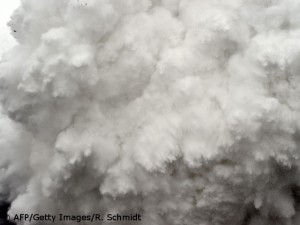

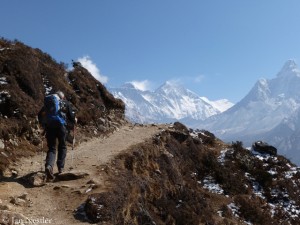
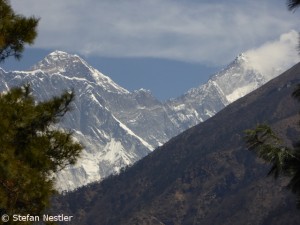
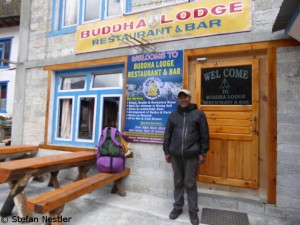
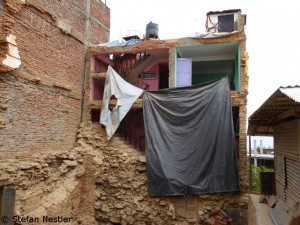
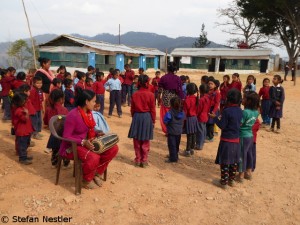
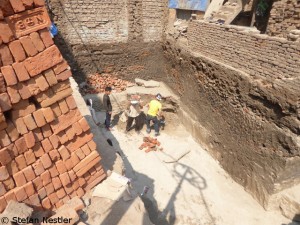
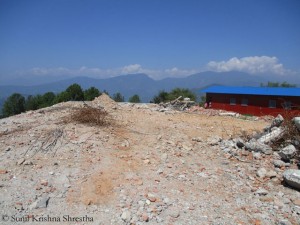
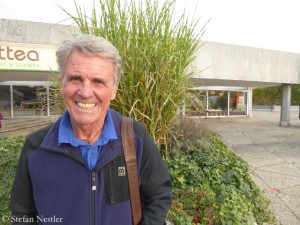
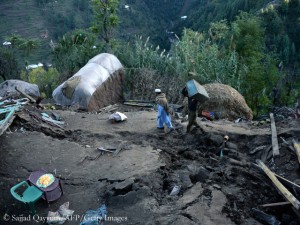
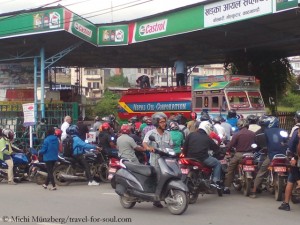
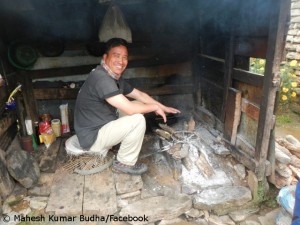
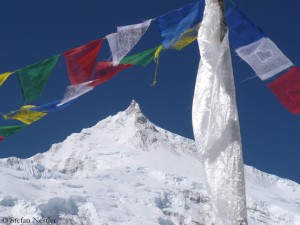
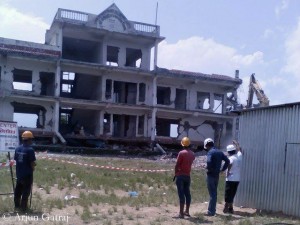
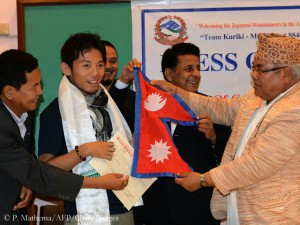





Feedback